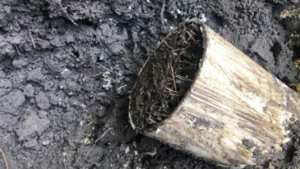
Drop channels and catch bowls in and neighbouring streets are some of the most widely recognized seepages includes particularly in metropolitan and rural regions where check and drain configuration is utilized. Deltas are intended to cart surface flee from the street and side of the road away from the street. Deltas can be of shifting plan, including control openings, grates, or a mix of these. Blocked Drains Maidstone prepare a good idea to make the channels in proper fitting. Numerous neighbourhood organizations utilize a standard plan for the majority of their drop channels on and contiguous to low-speed, low-volume streets. Bays on more significant level expressways are regularly exceptionally planned or chosen to meet the states of more prominent however less incessant tempests.

Drop deltas situated in or adjoining the way of engine vehicles
People on foot and bikes require grates that can oblige run-off while forestalling vehicles, bikes, and walkers from falling into the channel. At the point when bike traffic exists, grates ought to keep the tires of a bike from slipping into and being trapped in the mesh. In this way, bike safe meshes ought to be utilized at whatever point bike traffic is normal. The photograph underneath shows a favoured treatment for a drop delta situated on or close to a bike travel way. With a flush bike safe mesh, a bike tire can’t get trapped in the mesh given the cross example of supports which brings about just little openings. Drop bays ought not to be in the way of walkers. Raised side of the road drop bays, once in a while alluded to as tabletop bays, give an upward-opening in their sides for enormous volumes of run-off and trash evacuation. They are typically situated in low depressed or sump regions. Brought channels situated up in regions where a deviant vehicle or bike can crash into or over them ought to be no higher than 4 crawls over the encompassing ground. Drop channels that broaden more than 4 crawls over the encompassing ground can catch the underside of a vehicle similar to a raised headwall can, making it unexpectedly stop, run wild, or turn over.
Wiping out or Working on Risky Waste Headwalls
Headwalls are normal provisions on numerous neighbourhood streets. The headwalls are regularly used to support the shoulder and keep up with the street edge, keep the finish of the line from being squashed or broken when superseded, gather and scatter water streams, and sometimes portray the trench or channel. Headwalls, by their temperament, are by and large unbending constructions able to unexpectedly halting an engine vehicle whenever hit. At the point when they are situated on side slants, they may be possible dangers, causing misfortune of control, sloping, or vehicle rollover. In level regions, 1V:10H or milder, fixed items, for example, headwalls, ought not to expand more than 4 crawls over the encompassing ground. Fixed articles that are higher than 4 inches can get or then again catch part of a little vehicle underside causing sudden halting, loss of control, or potentially vehicle toppling. Headwalls that are dangerous are regularly simple to distinguish by scars left on them from past crashes. Headwalls that have been hit ought to be supplanted with a safe end treatment or crashworthy wellbeing highlight instead of supplanted or fixed in kind. As a quick, impermanent treatment, the headwall ought to be outlined with a retroreflective item marker predictable with the current release of the Manual on Uniform Traffic Light Gadgets.

